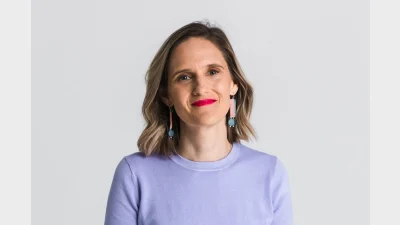Scale is not just about size when it comes to mergers


While sub-scale funds have been targeted for mergers, Jassmyn Goh writes that if they have efficiency and can bring value to members they still have a role to play.
The question of whether a superannuation fund has enough ‘scale’ to stay open or to merge has left many in the industry arguing that there is too much focus on sub-scale funds, instead of the larger funds who hold most of the $3 trillion in super.
The Australian Prudential Regulation Authority (APRA) for some years has been pushing for more super fund mergers but has since altered its messaging surrounding the reasons for merging.
APRA has since replaced the legislated MySuper ‘scale test’ with a broader ‘outcomes assessment’.
Appearing before the Senate Standing Committee on Economics earlier this month, deputy chair, Helen Rowell said: “The metrics considered under the existing scale test are insufficient to indicate whether a trustee is promoting the financial interests of, and providing quality, value-for-money outcomes for, fund members”.
Rowell said APRA was proposing a similar ‘outcomes assessment’ be undertaken by trustees beyond MySuper products.
“APRA’s view is that all superannuation fund members are entitled to have confidence that their trustee is operating efficiently and effectively, and delivering quality, value-for-money outcomes,” she said.
Pointing to the Productivity Commission’s draft report on alternative default models and the recommendations on merging inefficient funds, actuarial research house, Rice Warner, earlier this year said that if $2 billion in funds was regarded as a minimum size, two-thirds of industry funds were not viable.
While APRA has been pushing for more super fund consolidation, in reality there has not been as much merger activity as the regulator expected over the past decade. On the contrary, there have been a number of start-up super funds such as GrowSuper, Zuper, Spaceship, and Human Super.
Sub-scale funds
legalsuper’s chief executive Andrew Proebstl said fund consolidation should not have anything to do with scale or size but rather the fund’s clarity in purpose and strategy.
Proebstl said his fund’s vision was to be the preeminent fund for the legal sector and to do a great job in helping people in the sector save for and into their retirement.
“We find it quite empowering to have that clarity and vision and to know exactly where our members are and where prospective members are, and we don’t need to spend more on broad advertising campaigns or sponsorships like sporting clubs like some other funds feel they need to, to attract members,” he said.
“It’s horses for courses and people can do different things in different ways to get different outcomes. Just because you’re big doesn’t mean you don’t have weaknesses.”
Proebstl said while the focus was often on smaller funds, in reality most of the funds in super and members were held by a relatively small amount of large funds.
“If our concern is to make sure the super industry is safe I think if we’re focusing on the small funds, we’re probably not focusing on the bigger context in terms of where most of the money and members are,” he said.
“I’m not saying there should not be attention on small funds but there is a real risk that if we become quite fixated on smaller funds on whether they should close or merge there is a real risk we will miss what’s going on in larger funds that have majority assets and members.”
Also of the same view, Deloitte partner, Russell Mason said that sub-scale funds of $2 billion or less could and did survive. He said that ongoing viability and sustainability had a lot to do with what the fund was offering, trying to achieve, its membership base, its operating expenses, and its objectives.
Mason said he believed that sub-scale funds did have a role to play as most were providing benefits and services tailored to a narrow industry, and could achieve a lot of efficiency.
He said this was often achieved through outsourcing administration to big administrators like Mercer and Australian Administration Services.
“But most funds should regularly consider whether they are still providing the services that they should be to their members, that they’re still efficient, that they are operating and acting in best interest of their members,” Mason said.
“If they can’t answer all those questions positively then they should consider merger strategies. Those sorts of considerations occur more often with those sub-$2 billion funds and there will be a number that will say ‘yes merging is the right thing to do’ but I don’t think you can just put a blanket over them and say ‘you should all merge because you’re less than $2 billion’.”
KPMG superannuation advisory partner, Adam Gee, believed that consolidation would be inevitable over the next few years as there were a number of funds that were struggling to show real value for their members.
I do think the real challenge is for those very small funds trying to find a partner interested in potentially taking them on.
— Adam Gee
However, he noted that consolidation would not be as rapid as some might believe it would be as there were still challenges with conflicts of interests with board positions and executive positions.
“No doubt there would be some funds that will take over or merge to reasonable sized funds potentially in the same industry,” he said.
“But I do think the majority will be driven by scale impacts and from our perspective scale is not the number of members or funds under management you have but how efficiently you run your operation and whether you continue to invest in products and services to remain competitive.”
Gee said that there were a number of medium sized funds that had operations that could be deemed as subscale if you looked at them on an efficiency and cost basis, and might consider a merger over the medium-term.
“I do think the real challenge is for those very small funds trying to find a partner interested in potentially taking them on. This is particularly whereby some of those larger funds can get the size of the smaller funds in cashflow in two to three months without having to go through the difficulty of merging and excessive fund transferring,” he said.
However, Gee noted that the sub-scale funds had actually changed the super landscape as they had proved that it was possible to engage members in a reasonable manner if a fund had a good marketing story and the information was targeted at and tailored to the correct demographic.
“I think the challenge for a number of these funds is the high fees that they charge and a couple in particular have very passively managed underlying investment exposures and the challenge is to gain outperformance with high fees as the overall outcomes to members will be difficult to justify in the longer term,” he said.
“Whilst they’ve done a good job in getting an initial level of interest, I think distribution going forward will be difficult particularly if their investment performance drops off, given the underlying investment options and the fees they charge.”
Large funds
Taking a look at large funds, Proebstl said they had their own set of unique risks and issues including the possible clash of cultures between fund managers and super funds.
“There is an increasing trend for large funds to insource the management of investments and in principle that makes sense and not pay the high fees that managers get and the feeling that ‘we’re going to be able to do it cheaper and better etc’,” he said.
“One of the challenges the big funds have is how to blend a culture of a fund manager with a culture of an industry super fund and get it to come all together in a positive constructive way, there could be a lot of tension between those two types of cultures and it’s a significant challenge to manage.
“Knowing what I know about fund managers and industry super funds I could see some tension. That’s a unique risk for funds that are choosing to internalise investment management and that risk applies to large funds rather than smaller funds.”
Merging
On the recent consolidations such as Equip and Rio Tinto Staff Superannuation Fund, Mason said most of the parties were merging for the right reasons.
Mason said successful mergers were based on the merging reasons, intentions, and both parties acing in the best interest of their members.
“The first thing two funds need to consider when merging is that if it is in the best interest of members, what they were going to get out of it,” he said.
He said the second consideration would be what the structure of the new fund would look like and very early in the piece to figure out what the board and management would be like. After that the funds would have to question how to bring together services, service providers, etc. in a cost-efficient manner that was in the best interest of their members.
“I’ve seen mergers not succeed because they haven’t been able to resolve the issue of the trustee and management structure so it is important to solve those early in the piece,” Mason said.
“The other important thing is to say ‘does this fund have the philosophy and culture that is compatible with ours?’. Get to know the management and board and ask ‘do they think like us? Do they have our values and culture?’.
“Any merger will be successful if there is a good bringing together of the cultures.”
Board conflicts
Gee said he believed that APRA needed to be more proactive in terms of what they were doing around fund monitoring and that there was a need to take a more aggressive approach in consolidation.
“Unfortunately, the MySuper licencing regime was probably an opportunity to remove or not grant a licence to some of these smaller funds that had taken them at the time,” he said.
“So, I do think given some of those potential conflicts of interest around board and executive positions that there are some funds that despite the fact they are sub-scale would continue to believe they add value to members. I think APRA should absolutely be taking a more forceful approach.”
Super Review reported this month that APRA had dismissed the industry super fund’s suggestions that independent directors would stand in the way of fund mergers and that industry funds had exhibited most merger resistance.
“In fact, our experience to date would be that there seems to be more resistance in the industry-fund space around differences of view about composition of board and entitlement to board seats than we have seen in the retail sector with independent directors,” Rowell said.
Giving evidence before the Senate Economics Legislation Committee earlier this month, Industry Super Australia’s (ISA’s) director of public affairs, Matthew Linden, said that independent directors were no panacea to merger activity.
“Many independent directors, if they’re professional independent directors, owe their livelihood to their directorships. If they’re in a situation where a board is merging and their board position no longer is in existence, then they stand to lose financially as a
consequence of that,” he said.
“I think it’s well worthwhile looking at the detail in the APRA statistics to see the prevalence of small retail funds, which — despite the apparent prevalence of independent directors — are not consolidating at the rate that probably everyone would expect to see.”
Recommended for you
From government consultations to ASIC reviews, Super Review has put together a timeline of how super funds’ handling of member complaints has grown in prominence in the last 12 months.
Speaking to Super Review, Christina Hobbs shares why the superannuation industry needs to better service female members and how Verve Super implements an ethical investment approach.
Multiple super funds are in the process of recruiting a new chief executive as consolidation causes a dramatic decline in the number of C-suite roles.
In an interview with Super Review, Vision Super chief executive Stephen Rowe has shared his thoughts on the Active Super merger and the challenge of keeping up with ever-changing regulation.












